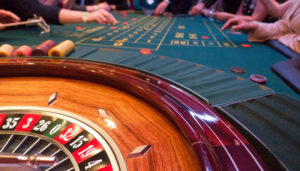Las Vegas Gambling Tips – Video Keno – Part Nine
Las Vegas Gambling Tips: Video Keno – Part Nine
On The Town With Vegas Vic
By: Victor H. Royer
Welcome to Las Vegas! My name is Victor H. Royer, but everyone just calls me Vegas Vic. I was named after that famous neon sign in Downtown Las Vegas, that cowboy with the hat on top of the Pioneer Club, always waving his hand and beckoning to his long love, Sassy Sally, on the other side of the street. I will be writing a few articles for AccessVegas.com, so I hope you enjoy them.
Video Keno – Part Nine
This article is continued from our last column.
Video Keno Strategy
The word “strategy” – as this applies to Keno and Video Keno – will surely sound odd to people whose understanding of casino games is vested purely and only in mathematics. To those readers, I wish to categorically restate that I understand that Video Keno games are negative-expectation games, meaning they are games whose inherent programming does not allow them to mathematically perform at a higher payback level than that which the program dictates. Therefore, if a Video Keno machine is set to pay back 91.97%, this also means that — mathematically speaking — it will always hold 8.03% for the house, this therefore being the house edge on that game. It is not my intent to dispute this, as long as we are discussing these games from “inside that box” — meaning from within the understanding of only those mathematical concepts and parameters.
For any player of Video Keno, when you see a game that is said to “hold” 8.03% for the house, this also means that the game must pay out 91.97%. It’s that old principle of the glass half-full of water: the mathematicians in this case will see the glass as half empty, and the players will see the same glass as half full. It’s an analogy I have used several times in my books, an it is still a nice way to explain why some of us will never understand how Video Keno can make us profits, while for others understanding it will be easy and natural.
What the mathematicians often fail to understand is that we who wish to play Video Keno for profit do not play the game either to validate the statistics they have created, nor do we play the game because we somehow with to “buck the odds.” We play the game because we know that even a negative expectation game such as Video Keno with an 8.03% house hold must pay out 91.97% of the time — and that’s a pretty solid fact that even the math people will accept. The difference is that the math people will always say something like this: “A machine that holds 8.03% for the house means that you will be losing $8.03 form each $100 you play in the machine.” Well, really? When was the last time you played any gambling game where anything like this was ever so? Okay, I know — it’s only an example, and no machine will always do that, because that’s the example that shows that at the end of the fiscal year life cycle of that machine’s program, it will average it’s take and payouts to something close enough to that percentage to pass regulatory reviews.
Fine. We understand that. It’s a good way to get the machine licensed, a good way to explain to the casinos what they are likely to make on the game, and it all fits ever so nicely within the parameters of that very comfortable box called “mathematics, probability and odds.” Basically, what this means is that if you play any such game for, say, 55 years or so, it is most likely that you will lose an average of close to $8.03 out of every $100 you so spend. Why 55 years? Well, that’s an arbitrary figure based on my earlier example.
Notice, however, how the mathematicians always tend to explain such events — they use terms such as: “will most likely lose”, and “an average of close to” and so on. These are indefinables, and are so used because not even the most exhaustive mathematical analysis of such protracted events can take into account the infinity of the events themselves. What if the 10,000,000 events that went into these calculations were actually an anomaly? What if the reality of a billion-times more of these events were to prove that the reality is actually nothing like these tests? Therein lies the major fallacy of any such thinking — it can’t be proven to be accurate for all infinite events. Of course, “proving” something in numerics and physical sciences is apparently extremely important to those who do this, and therefore in the absence of any such “proof” one has to be made up to look reasonably like a “proof”, at least something on which others who also think this way can agree.
Click to read Video Keno – Part Nine (Continued)
Victor H. Royer, known as Vegas Vic, is the author of 42 books. Mostly known for books, articles, and columns on casino games and gambling, he is also the author of New Casino Slots, Great Gamblers: True Stories and Amazing Facts, The Great American Joke Book, as well as his works of Fiction, which include: Another Day, and the Western: Riders on the Wind. Versatile and multitalented, Royer is the creator, producer, and host of the Web-TV show Great Casino Slots, now showing at www.LasVegasLiveTV.com. He also composes music and performs under the names Glenn Diamond, Pappy Jones, Hans Dorfmann, and Miguel Armandaiz. For more information, please visit him at www.MoreCasinoDeals.com and www.GamingAuthor.com. Sign up for the Insider Advantage Newsletter at: http://www.accessvegas.com/old-access/membership
His books can be ordered through this website, by following the links provided
(c) Copyright 2016 Victor H. Royer. All rights reserved. For syndication purposes, contact GSR Holdings Inc. at: [email protected]
Return To Las Vegas Gambling Tips







